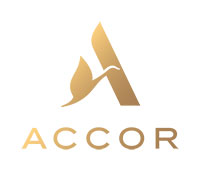Hotel Spas in The U.S. - Will Revenue and Profit Growth Continue in 2009? (États-Unis)
|
Hotel Spas in The U.S. - Will Revenue and Profit Growth Continue in 2009? (États-Unis)
|
Catégorie : Amérique du Nord et Antilles - États-Unis - Économie du secteur
- Chiffres et études
Ceci est un communiqué de presse sélectionné par notre comité éditorial et mis en ligne gratuitement le 07-01-2009
Spas continued to contribute to the top and bottom lines of U.S. hotels in 2007. Total spa department revenue increased 5.0 percent from 2006 to 2007, while spa department profits grew 5.8 percent. These are among the findings reported in PKF Consulting’s (PKF-C) recently released 2008 edition of Trends in the Hotel Spa Industry, a report that examines the revenue, expenses, and profits of hotel-operated spas in the United States.
“Lodging industry owners and operators fully realize that a well-run spa operation can benefit a hotel in many ways,” said Bruce Baltin, senior vice president in the Los Angeles office of PKF Consulting. “In addition to the monetary contribution, a spa can help define the market position of a hotel, provide a competitive asset that is attractive to multiple demand segments, and diversify a hotel’s revenue stream. It is this type of product differentiation that managers hope will provide a competitive advantage in 2009.”
During challenging times like these, the spa industry has the potential to be buoyant. However, it is not invincible. “The dynamics of the spa industry enable it to persevere longer than other industries for several reasons,” Baltin noted. “A large portion of its consumers are affluent, an increase in stress can further emphasize the importance of staying healthy, and in difficult times people tend to seek out experiences rather than material objects. All that being said, hotel spa usage will likely decrease due to expected declines in occupancy rates and guest counts for the lodging industry in general.” In its December 2008 Hotel HorizonsSM report, PKF Hospitality Research (PKF-HR) is forecasting that the typical U.S. hotel will experience a 5.3 percent drop in occupancy in 2009.
The 2008 Trends in the Hotel Spa Industry report analyzes the 2007 financial performance of 116 spas operated by hotels located throughout the United States. In aggregate, the 116 hotels that voluntarily submitted their data for the survey averaged 405 guest rooms in size and achieved an occupancy of 70.8 percent and average daily room rate of $257.14 in 2007. Both urban and resort hotel spas were included in the research, while day spas, medical spas, destination spas, and hotel spas that independently lease space were excluded. For the purposes of this research, departmental profits are calculated before deductions for undistributed expenses and fixed charges.
Spa Revenues
Since the number of occupied rooms for the survey sample remained relatively flat (0.2 percent decline), the 5.0 percent rise in spa revenue was likely due to an increase in the price for spa services, increase in number of services utilized per hotel guest, or a stronger mix of local patronage. “Recent research has shown that although consumers are tightening their belts, they are still traveling albeit with a different mindset and expectation of services. People increasingly are requiring greater value and a heightened level of experience. Hotels with spas can meet those needs by providing promotional packages, special offers, and discounts,” observed Gabrielle Lerner, associate in the Los Angeles office of PKF-C.
For the hotel spas that participated in the survey, department sales represented 3.9 percent of total hotel revenue in 2007. Within the spa department, massage continued to be the greatest source of revenue (55.6 percent), followed by skin care and body work (18.8 percent) and salon services (10.7 percent).
Spa Expenses
Overall, spa department expenses increased 4.7 percent from 2006 to 2007, driven mainly by a 6.6 percent increase in labor costs. Like all departments within a hotel, labor-related costs are the biggest operating expense for spas, representing 57.2 percent of department revenue. “Labor costs in urban hotel spas tend to be somewhat higher than in resort spas. Urban hotel spas have lower revenues and inconsistent demand for services making scheduling more complicated,” Lerner said.
Spa Profits
The average departmental profit margin for the spas in the survey sample was 24.1 percent. For comparison purposes, the average profit margin for all other operated departments in PKF’s Trends in the Hotel Industry survey was 29.4 percent. From 2006 to 2007, hotel spa department profits grew 5.8 percent. Profit growth was greater for urban spas (12.3 percent) versus resort spas (4.6 percent). “While 5.8 percent is a healthy rise over the previous year, it was less than the 6.7 growth rate for total hotel operated department income, which demonstrates the evolving spa industry still has room to improve,” Baltin noted.
Hotel Spas In 2009
“As U.S. hotels are forecast to struggle with declines in occupancy, ADR, and revenue, we believe there is an opportunity for spa operators to capitalize on operational and competitive advantages,” Baltin said. “Hotel spas are an important amenity to all market segments and should be leveraged with regards to meetings, conventions, and other special events. Innovative marketing can also be created to promote the spa as a ‘staycation,’ thereby providing a refuge for local residents.”
To purchase the 53-page 2008 edition of Trends in the Hotel Spa Industry, please visit the firm’s online store at www.pkfc.com/store, or call (866) 842-8754. In addition to multiple data tables that display revenue, expense, and profitability benchmarks, the report includes editorial content from the following guest authors: Lynne McNees - ISPA, John Korpi - ISPA Foundation, Mary Tabacchi - Cornell University, Jennifer DiFrancesco - Miramonte Resort and Spa, and Judith Singer - Health Fitness Dynamics, Inc. In addition Brett Blumenthal - Gensler, Jeanie Klueter - WATC, Julia Monk - BBG-BBGM, and Chris White - WTS International participated in a roundtable discussion on spa design trends.
|
|





